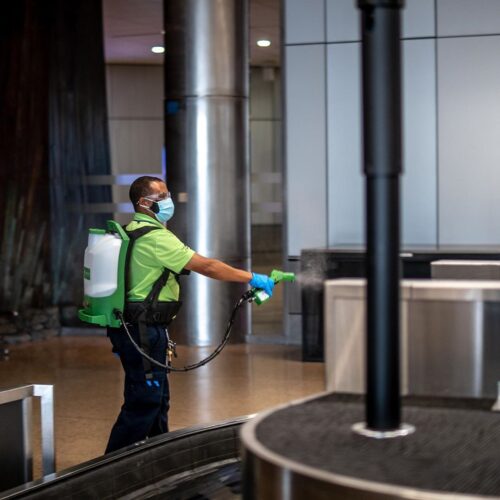
First: an invite
I’m honored to be one of the presenters at the virtual Travel 2021 Summit on October 7 and 8 and focusing on what travel might be like in the next year.
Registration is free. You can sign up here.
Airports, airlines offer COVID testing, TSA appointments, more
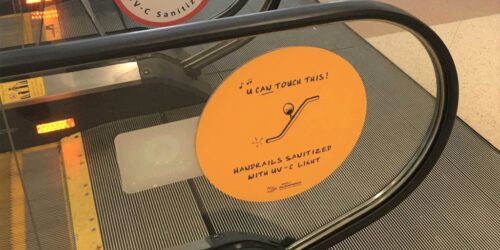
Here is a slightly different version of our story that first appeared on USA TODAY
With Alaska Airlines, JetBlue, United, and other airlines announcing fare sales and new routes for winter, it may feel like air travel is returning to normal.
But after a spike over the Labor Day holiday, the numbers of travelers passing through Transportation Security Administration checkpoints are still way down compared to this time last year.
Throughout the summer, airports were scrambling to enhance cleaning regimes and install hand-sanitizing stations, plexiglass barriers and other health-focused tools. Now airports are adopting new strategies to keep passengers safe and instill confidence in travel.
Here are some of the programs you may encounter:
Security checkpoint by appointment
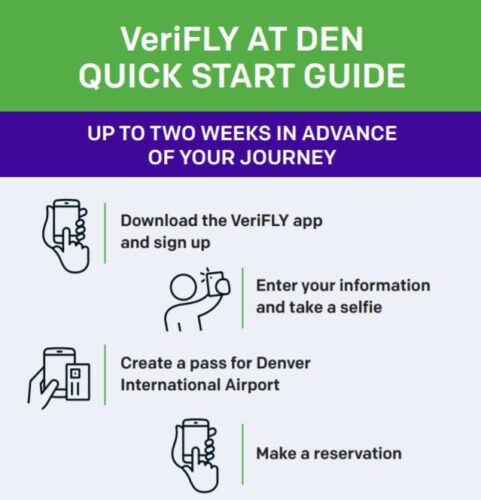
This month, Denver International Airport (DEN) debuted the free, app-powered VeriFLY program, which blends a checkpoint reservation system with a health check. Passengers download the VeriFLY app (an Android version is on the way) and complete a health survey 24 hours before their flight. At the airport, participants get a touchless temperature check before accessing a dedicated TSA lane.
More robots and robot-like helpers
Airport employees serving as Travel Well Ambassadors at San Francisco International Airport (SFO) roam the terminals reminding passengers to wear their masks. Softbank Robotics’ direction-giving robot, Pepper, has been reprogrammed to serve as a mask nanny as well.
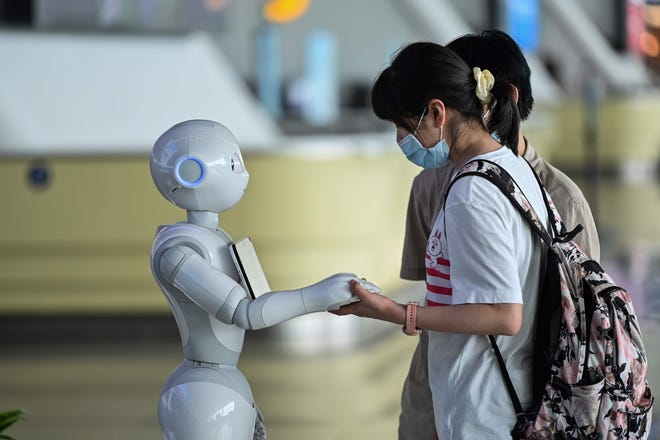
Intelligent sterilizing robots and disinfecting robotic machinery are on duty at Pittsburgh International Airport (PIT), Hong Kong International Airport, and at San Antonio International Airport (SAT).
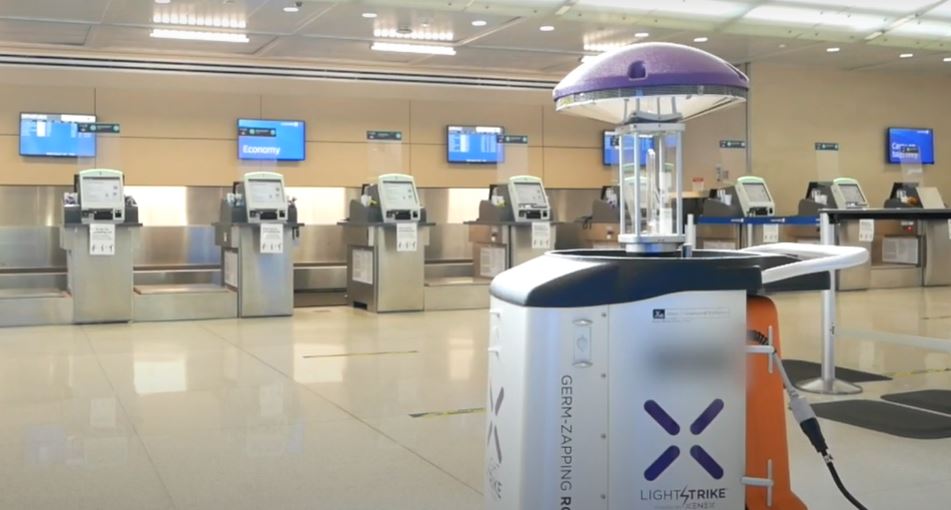
Cleaning up with UV light and a spritz
You can’t see it, but some airports have air-cleansing bipolar ionization (BPI) devices installed in the heating and air conditioning systems. And an increasing number of airports are using UV and medical-grade UVC light to zap bacteria and viruses on surfaces and, in some cases, people.
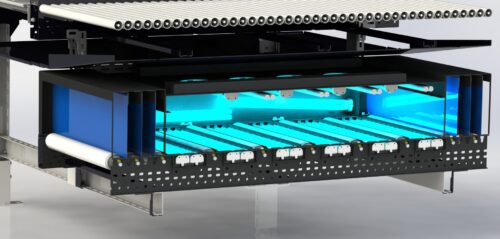
London’s Gatwick Airport is installing a Smiths Detection-made system at eight security checkpoint lanes that will send security bins through a tunnel that uses short-wavelength UV-C light for disinfection.
Bluewater Technologies, a design technology firm in Michigan, has a system that uses medical-grade, UV-C light to quickly sanitize airport luggage carts in a few seconds.
And Toronto Pearson International Airport (YYZ) has installed UV-C sterilization units inside some escalator and walkway mechanisms to continuously clean the handrails.
The Toronto Airport also has a new, voluntary disinfection corridor that uses a chemical-free spray to give passengers a quick pre- or post-flight sanitizing spritz.
COVID-19 testing at airports
Temperature checks may become the norm, though there continues to be debate over who should be responsible for carrying them out. Earlier this month, a new bipartisan Senate bill was introduced that would require the TSA to perform that task.
Now, all eyes are on COVID-19 testing at airports.
On Sept. 22, the International Air Transport Association (IATA), joined trade groups such as Airlines for America (A4A), Airport Council International (ACI) World, and Airports Council International-North America in calling for the systematic testing of all international travelers before their flights.
“This should enable governments to safely open borders without quarantine. And it will provide passengers with the certainty that they can travel without having to worry about a last-minute change in government rules that could spoil their plans,” said IATA Director General Alexandre de Juniac in a statement.
Where to get tested before you fly.
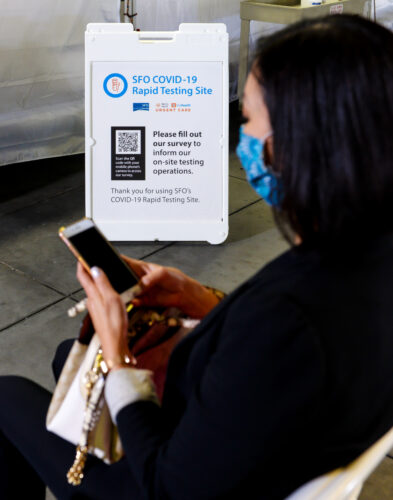
Last week, United Airlines and Hawaiian Airlines announced their own COVID-19 testing pilot programs. United will test its system on passengers flying from San Francisco to Hawaii. Hawaiian Airlines is setting up drive-through sites near LAX and SFO. Both will launch on or close to Oct. 15, when Hawaii begins allowing out-of-state visitors to bypass quarantine with a negative test result.
XpresSpa, which has temporarily closed its network of in-airport spas, is developing a network of COVID-19 testing centers at airports. So far they have test sites at JFK International Airport and at Newark Liberty International Airport.
The medical clinic at Vancouver International Airport (YVR) offers travelers COVID-19 tests by appointment, with results typically returned within 24 to 72 hours. YVR and Canadian airline WestJet are also creating a pilot program to offer voluntary preflight COVID-19 testing with fast results to passengers boarding domestic flights, according to the CBC.
And through mid-October, Italian airline Alitalia is operating two of its seven daily Rome-Milan flights as “COVID-Tested.” For these flights, only passengers who have tested negative for COVID-19 allowed on the plane. Passengers who arrive at the airport without a certificate proving they have tested negative for the virus 72 hours before boarding can take a fast, free COVID-19 test at the airport.
COVID-19-sniffing dogs
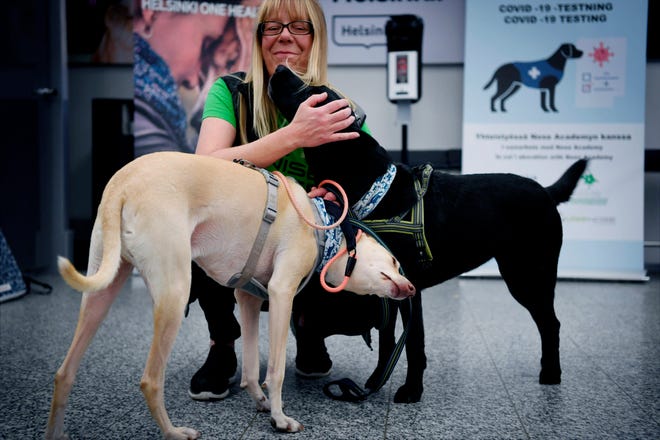
And passengers flying out of Finland’s Helsinki-Vantaa Airport or Dubai International Airport might also encounter COVID-sniffing dogs.
Look for the seal of approval
Airports Council International (ACI) World recently rolled out a global Airport Health Accreditation program designed to restore public confidence in air travel. The program should also prove to governments that airports are following international health and safety standards.
The voluntary health and hygiene program requires airports to answer questions relating to everything from cleaning and disinfection to physical distancing, staff protection, passenger communications, and facilities.
Airports seeking the Airport Health Accreditation must also provide pictures, videos, and explanations to show how they are following international protocols.
In mid-August, Istanbul Airport became the first airport in the world to be accredited through the program. In early September, Boston Logan International Airport (BOS) was the first airport in North America to receive the designation.
Now other airports are rushing to get the ACI seal of approval.
ACI launched the Airport Health Accreditation in late July with a goal of reaching about 100 or 150 airports, ACI World Director General Luis Felipe de Oliveira told USA TODAY. But so far more than 300 airports have expressed interest,146 contracts have been signed, 46 airports are accredited and 50 to 60 more requests are arriving each week.